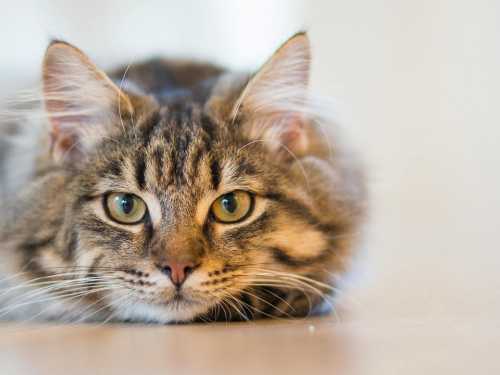
When I was a child, I had a Siamese kitten. He was like Gav from the Soviet cartoon: blue eyes, a dark mask on his whiskered face, matching gloves on his paws, and a thin dark tail with a kink at the tip. The kink defined the breed. This congenital “defect” indicated his membership in the elite feline bloodline of blue Siamese. Although, a little later, I learned that precisely this particular kink would have definitely barred my purr-cat from exhibiting.
Frankly, back then, my kitten and I couldn't care less about pedigrees. We cared little about genealogy, eighth-generation ancestors, the purity of anyone's bloodline, or the opinions of felinologists regarding cat tails. We were too preoccupied with each other and the world around us. Did we care about breeds?
Much water has flowed under the bridge since then. The image of the playful kitten has long since faded from my memory. In fact, cats themselves, as such, no longer interest me much. As it turns out, I'm a dog lover (you know, right, that everyone is unofficially divided into “dog people” and “cat people”?). At this point, my story about Siamese cats could have ended. But it turned out that the Siamese and my paths crossed again. And this time on their own turf—Siam (the former name of the Kingdom of Thailand).
I saw Siamese cats (meaning local ones) on the streets of mainland Thai cities. They were just cats – multicolored, yellow-eyed, wearing collars with bells. I really wanted to check their breed identity based on their last characteristic – a broken tail. But I didn't risk it. How would I explain my inappropriate behavior to others? A tourist touching the tails of street cats with whiskers and stripes – ugh! I had to put cats out of my mind. For now.
The second time we encountered the local purring cats was on the Thai islands. And it was there that I saw real Siamese tails with my own eyes. I confess, I wasn't expecting such a sight. The innate kink in the thin tail of the Gav from my childhood was simply a modest exterior detail compared to the intricate artistic twirling of the tails of his fellow countrymen. There was no time for decorum here. True to the wise folk saying, “A Russian won't believe it until he touches it with his own hands,” I tried to touch every cat I saw on Phi Phi Island that day. The tactile sensations were incredible! The cats, however, were just ordinary cats: lazy and friendly.
So where do Siamese cats (meaning Siamese cats and cats from Phi Phi Island) get their unusual tails? According to the most popular legend in the world, this important part of the cat's body was personally damaged by the princesses of ancient Siam. They strung numerous rings and hoops onto the tails of their beloved pets before swimming in either the Andaman Sea or a lotus lake. The legend, however, doesn't explain why the tails broke. Perhaps the rings were too heavy, breaking the feline's beauty with their weight? Or perhaps the princesses broke the cats' tails to ensure the decorations would stay in place and prevent them from slipping off? It's terrifying to even imagine.
Compassionate folk have concocted a “lighter” version of this horrific story in a feeble attempt to rehabilitate the cruel princesses—they claim the cats themselves were overzealous in curling the ends of their tails to prevent the rings from being lost. This begs the question: why did they do this? To avoid getting in trouble with their high-born mistresses if any of the entrusted treasures were lost! In short, this version, too, casts the heirs of the Siamese kings in a less-than-favorable light.
Another ancient folklore, both oral and literary, attributes the duty of Eastern cats to guarding the treasures of Buddhist temples. The poor cats were forced to perform a tireless duty, wrapping their tails around jars filled with precious jewels day and night. The tip of their tails would rest directly into the neck of the jar (perhaps to maintain their position). Here, too, there are two possible logical outcomes. The more benign version: the tip of the tail broke from being constantly bent. And the traditionally sadistic Siamese version: Buddhist monks had special heavy lids for the aforementioned jars. They began to actively use the lids when the whiskered guards could no longer bear the torture of insomnia and fell asleep. Such an edifying ritual.
Legends are legends, jokes are jokes, but the question remains. So why? The most logical assumption is that there was a case of… feline incest. Hence the physical defect of a “spoiled” tail, which became a physical characteristic. The true (i.e., the first of their kind) Siamese were kept isolated from the rest of the world in the “dungeons” of royal palaces and Buddhist temples. These cats were considered the property of the king, a source of national pride and treasure. Exporting them outside the country was prohibited. There were few animals, and “fresh” genes did not enter the population for centuries (modern Thai island cats are in a similar situation).
In the nineteenth century, the ubiquitous Europeans finally “acquired” a purebred pair. Rumor has it that the reigning monarch of Siam personally presented the kittens to a representative of the British royal court. There, breeding and selection efforts began in earnest. Over time, the “sinful” inbreeding of cats was eradicated, and the first Siamese with “intact” tails were finally bred. The result of this work was enshrined in the world's most important felinological charter, forever banning purebred Siamese cats from having tails like their distant ancestors. And so, the royal Siamese from Siam itself suddenly became “mongrels.”
However, even now, in litters of purebred cats of the new “straight-tailed” type, kittens with kinked tail tips occasionally appear. Feline breeders shrug their shoulders and attribute this phenomenon to the “floating” k gene, responsible for the true Siamese tail. Incidentally, Darwin himself mentioned this, fully admitting that this kinked or shortened tail type could be a distinctive feature of the Siamese cat breed, inherent only to Siamese cats (or, at the very least, to all cats in the Malaysian region). In other words, mutations, the results of “incorrect” crosses, and random inheritance have nothing to do with it. Well, here's another confirmation of the pithy folk wisdom: you can't crush genes with your finger!





